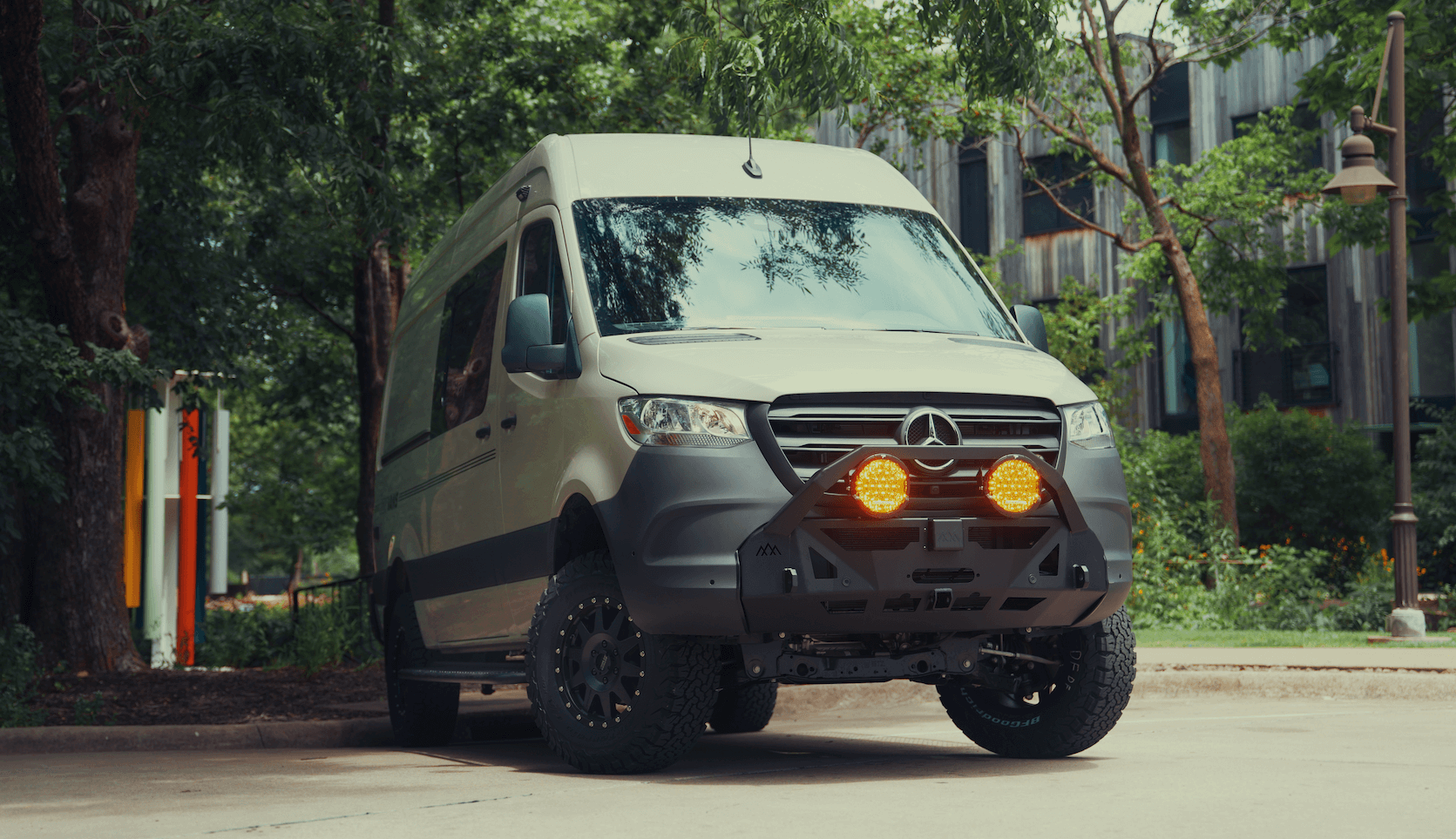Recreational Vans

A roof air conditioner does one job extremely well. It pulls heat from the cabin and rejects it outside, creating a controlled pocket of comfort inside a compact rolling space. For van travelers and overland crews, that stable temperature protects sleep, electronics, pets, and food, and it makes long days on the move a lot more livable.
Roof mounted units are sealed vapor compression systems. The compressor circulates refrigerant, the evaporator absorbs heat from cabin air, and the condenser dumps that heat outside. The roof location helps because hot air stratifies. By pulling from the top of the cabin and exhausting above the vehicle, a roof air conditioner avoids recirculating hot discharge air and preserves interior volume.
Key considerations:
Noise is a common concern in small spaces. Compressor isolation mounts, soft start modules, and balanced fan blades can reduce vibration and startup thump. Ducted plenums help distribute air without a draft directly at your face, while non ducted units are simpler and lighter.
Getting capacity right starts with heat gain. Two similar vans can need very different BTU targets based on window area, insulation details, and sun exposure. As a rule, higher humidity and direct sun push you toward the top of the range. In dry, high elevation climates with excellent insulation, a lower capacity paired with smart shading can be enough.
Traditional roof air conditioners expect 120 volt AC power and draw high current on startup. A soft start device tempers that inrush so smaller inverters handle the load. Newer 12 volt compressor units skip the inverter and are built for battery operation. They typically sip power at lower speeds, shine during overnight use, and pair well with lithium storage, though they may cost more upfront.
A realistic power plan blends battery capacity, alternator charging, and shore charging.
If you plan to sleep with the roof air conditioner running all night, calculate watt hours for eight hours of use at an average duty cycle. Then size batteries and charging accordingly, targeting a comfortable buffer for hot nights.
Installing a roof air conditioner is more than cutting a standard roof opening. You are creating a structural, weatherproof portal with electrical, drainage, and airflow demands.
Van roofs use ribs and thin sheet metal. A proper frame or adapter distributes load and protects the panel from flex. Use compatible sealants, torque hardware to spec, and check fasteners after heat cycles. Keep weight centered and consider total roof load with racks, fans, and solar to stay within the roof rating.
Plan supply and return routes so the unit does not short cycle. Avoid pulling return air from a hot upper cabinet. Manage condensation with clean drains and level parking where possible. Sound deadening around the plenum without blocking airflow can tame resonance. A well placed divider curtain reduces the cooled volume for faster pull down.
Rinse condenser fins gently, vacuum intake screens, and replace filters as recommended. Inspect gaskets and re apply sealant when needed. In shoulder seasons, take advantage of ventilation fans and night air, then use the roof air conditioner to trim humidity or handle the afternoon spike rather than running it nonstop.
Comfort is not only about the appliance. Good insulation, window treatments, and smart layout let a roof air conditioner work at lower speeds which saves energy and reduces noise. Electrical design must anticipate surge, continuous draw, and charging sources that match your travel rhythm. When these pieces align, the experience feels seamless, even in demanding heat.
For owners exploring a full build or a targeted climate control upgrade, integration is everything. That includes matching BTU to cabin volume, selecting 12 volt or shore powered equipment for your routes, engineering a battery and charging plan, and stiffening the roof opening so the unit stays quiet and leak free over time.
Looking for examples and next steps with a professional team that builds around real travel use and off grid power planning? Explore our recreational vans to see how complete systems come together. If you want a from scratch approach tuned to your routes and seasons, visit our custom van build page. Shoppers comparing financed platforms can review mainstream vans for packages that accept climate upgrades.
Strong climate control belongs in a thoughtful build. OZK Customs designs and installs roof air conditioners as part of cohesive electrical and interior systems, ensuring quiet operation, proper sealing, and power that matches your travel style. Tell us where you go, how you camp, and how cool you want to sleep, and we will spec the right solution.
Ready to spec the right roof air conditioner and dial in power, noise, and airflow for real world travel? Talk with OZK Customs about a complete custom build or a targeted upfit that integrates climate control, electrical, and interior design as one system. Book your consult now and we will map the best solution for your routes, seasons, and budget.
Ready to spec the right roof air conditioner and dial in power, noise, and airflow for real world travel? Talk with OZK Customs about a complete custom build or a targeted upfit that integrates climate control, electrical, and interior design as one system. Book your consult now and we will map the best solution for your routes, seasons, and budget.
ADDRESS:
6159 E Huntsville Rd, Fayetteville, AR 72701
PHONE:
(479) 326-9200
EMAIL:
info@ozkvans.com